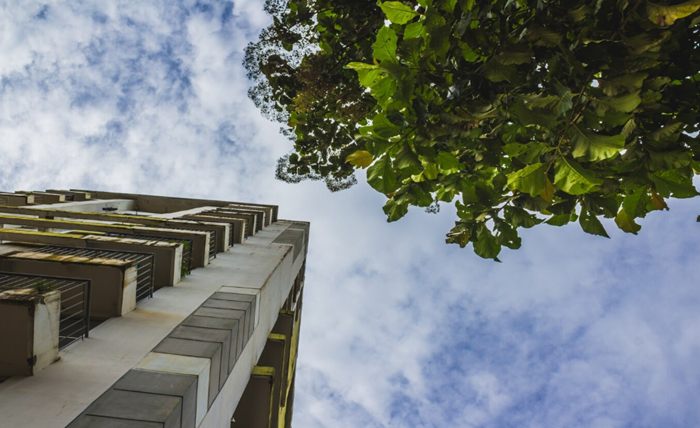When the wind blows, it brings more than just a gentle rustle through the leaves; it can also herald potential threats to your home and community. As a responsible homeowner, you must be vigilant about the stability of the trees surrounding your property. Whether you’re looking for a tree service Rochester MN, in this article, you will explore the warning signs of tree instability, preventive measures, and the necessary steps to mitigate these risks effectively.
Understanding the Threat: How Unstable Trees Affect Roofs and Power Lines
The Impact on Structures
Unstable trees pose a significant threat to roofs. As trees age or become weakened by disease, their branches may overhang roofs, creating potential for damage. During storms, these limbs can break, leading to punctures, scrapes, or even the collapse of roofing materials. The weight of fallen branches can compromise the structural integrity of your home, leading to costly repairs.
The Risk to Power Lines
Power lines are equally vulnerable. Falling branches can lead to power outages, disrupt essential services, and pose electrical hazards. Moreover, trees that grow too close to power lines may create fire risks, especially in dry, windy conditions. Regular maintenance, such as trimming and removal of hazardous trees, is crucial to prevent these dangerous scenarios and ensure safety.
Signs of Tree Instability Around Your Home
Leaning Trees
One of the most apparent signs of a potentially unstable tree is a noticeable lean. Trees should generally be upright, and any significant tilt could indicate an underlying issue. This leaning can stem from root damage or soil instability, both of which necessitate immediate attention. If you observe a tree leaning toward your home or power lines, it’s a red flag that should not be ignored.
Cracked or Uplifted Soil
The condition of the soil around the tree’s base can provide crucial clues about its stability. Cracked or uplifted soil may indicate that roots have been displaced, possibly due to high winds or saturated ground conditions. Regularly inspect the area to catch these symptoms early. Such soil disturbances can weaken the tree’s anchorage, increasing the risk of toppling.
Dead or Falling Branches
Dead branches are not only unsightly but also dangerous. They are more likely to fall during storms, posing a threat to your roof and any nearby power lines. Frequent shedding of branches may indicate that the tree is stressed or diseased. Prompt pruning and expert evaluation can mitigate these risks and help preserve the tree’s health.
What to Do When a Tree Threatens Your Roof: Immediate Actions and Solutions
Evaluate the Risk
Begin by assessing the situation from a safe distance. Identify any visible signs of danger, such as leaning trees, cracked trunks, or broken branches. Take note of any branches brushing against your roof or power lines, as these can quickly escalate into more severe problems.
Take Immediate Action
If you determine that the tree poses an imminent threat, consider the following steps:
Contact a Professional Arborist: Engage a certified arborist to assess the tree’s condition and recommend the most suitable course of action.
Notify Local Authorities: If the tree poses a threat to public spaces or power lines, contact your local utility company or city officials immediately.
Temporary Solutions: As a short-term measure, clear debris and secure loose branches to prevent further damage until professional help arrives.
Long-term Strategies for Managing Tree Health and Stability
Regular Inspections and Maintenance
Consistent monitoring of your trees is crucial to ensuring their health and stability. Schedule periodic inspections by certified arborists who can identify potential hazards, such as weak branches, decay, or pest infestations. Regular pruning helps maintain structural integrity, promoting healthier growth and reducing the risk of falling limbs that may threaten your roof or power lines.
Soil and Root Care
The foundation of a tree’s health lies beneath the surface. Ensuring proper soil aeration and drainage can significantly enhance root stability. Mulching around the base of your trees helps retain moisture and provides essential nutrients to the soil. Avoid compacting soil around roots, as this can hinder growth and weaken the tree’s anchor.
Proactive Risk Management
Implementing a proactive tree management plan can effectively mitigate risks. This includes assessing tree species known for their susceptibility to wind damage and replacing them with sturdier, more wind-resistant varieties if necessary. Additionally, maintaining a clear buffer zone between trees and critical infrastructure, such as roofs and power lines, can prevent catastrophic damage during storms.
Final Thoughts
Being proactive in assessing and addressing the risks posed by unstable trees can safeguard your home and community. Whether you’re looking for a tree service Rochester MN, by engaging with professional arborists and investing in regular maintenance, you not only protect your property and power lines but also promote a safer, more resilient environment. Recognizing the signs of instability and acting promptly ensures that you mitigate potential hazards before they escalate.


